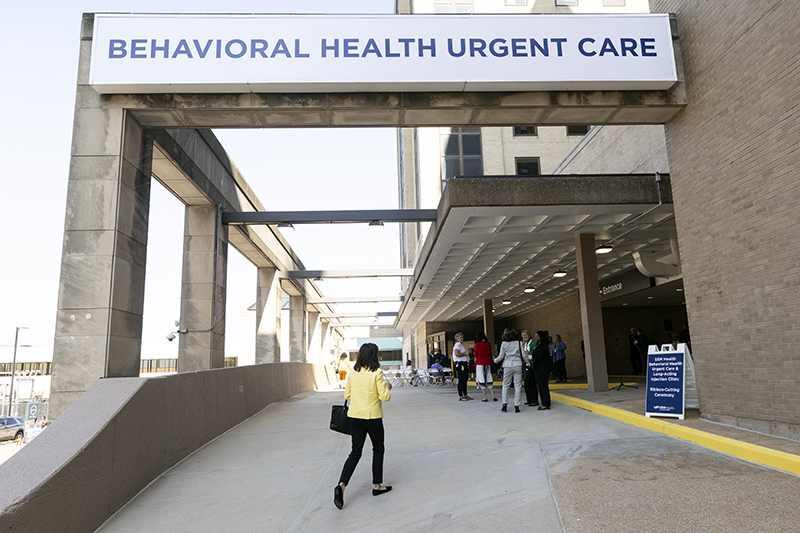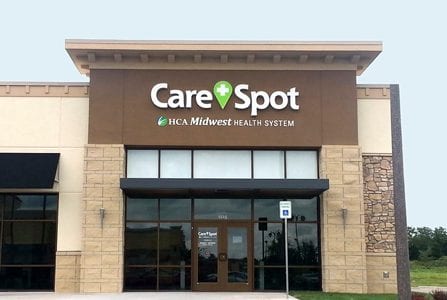The Ultimate Overview to Recognizing Urgent Care Clinics
The Ultimate Overview to Recognizing Urgent Care Clinics
Blog Article
The Relevance of Urgent Care Centers in Bridging the Void Between Medical Care and Emergency Services
Urgent care centers have actually become an important part of the health care landscape, effectively dealing with the vital demand for immediate medical interest without considering emergency situation solutions. By giving take care of non-life-threatening problems, these centers help to reduce the worry on emergency clinic and boost client access to timely treatment. Their expanded hours and diverse solutions deal with a growing population seeking options to standard medical care. However, the progressing function of immediate treatment centers elevates vital questions about their assimilation within the more comprehensive health care system and the ramifications for patient outcomes and resource allotment.
Overview of Urgent Treatment Centers
Urgent treatment centers have become a vital component of the medical care shipment system, offering accessible clinical services for non-life-threatening conditions. These centers generally run outdoors standard office hours, offering clients an alternative to emergency clinic and primary care setups. Patients seeking urgent treatment frequently existing with problems such as small injuries, infections, or ailments that call for prompt interest but do not posture an immediate risk to life or limb.
Immediate care centers are staffed by an array of healthcare experts, consisting of medical professionals, registered nurse specialists, and doctor assistants, who are furnished to detect and treat different clinical problems. They commonly feature analysis tools such as X-ray machines and lab services, enabling them to offer detailed treatment on-site.
The facility of immediate treatment facilities has been influenced by the boosting need for prompt medical services in a fast-paced culture, where patients may struggle to secure appointments with health care carriers. Consequently, these centers aim to minimize congestion in emergency situation divisions, enhancing total medical care effectiveness. In addition, immediate treatment centers frequently function as a bridge in between medical care and emergency services, making sure that people obtain proper treatment customized to their particular clinical demands.

Benefits of Urgent Care Provider
Accessing prompt medical treatment is a substantial advantage of urgent care services. These facilities provide instant attention for non-life-threatening conditions, efficiently minimizing delay times contrasted to typical emergency situation divisions. Clients looking for treatment for small injuries, diseases, or urgent wellness problems can get treatment without the long delays usually connected with hospital gos to.
An additional trick benefit is the extensive hours of procedure. Many urgent care facilities are open evenings and weekend breaks, accommodating individuals who might not be able to see their health care company during common office hours. This flexibility makes immediate treatment an accessible alternative for those with busy timetables or sudden health and wellness concerns.
In addition, immediate treatment facilities usually use a large range of solutions, consisting of diagnostic testing, X-rays, and fundamental lab solutions. This comprehensive approach permits for fast medical diagnosis and therapy, enhancing patient fulfillment.
Additionally, immediate care facilities are typically more cost-efficient than emergency situation rooms, making them an eye-catching option for people without insurance or those with high-deductible plans. Generally, immediate treatment solutions play a crucial role in providing easily accessible, timely, and economical treatment.
Comparison With Medical Care
Usually, patients usually consider their options in between immediate care facilities and medical care carriers when seeking medical focus. Both serve necessary roles in the health care system, yet they differ dramatically in availability, scope, and expense.
Health care companies are usually the very first point of get in touch with for individuals, concentrating on long-term health and wellness management, preventative care, and persistent condition management. They provide continuity of care, promoting a patient-provider relationship that permits extensive wellness analyses and individualized treatment strategies. Arranging a consultation can be time-consuming, frequently requiring days or weeks in advancement. Urgent Care.
On the other hand, immediate care facilities provide instant take care of non-life-threatening conditions that need prompt attention, such as small injuries or infections. These centers commonly operate outside of typical workplace hours, suiting individuals that might not have the ability to visit their health care service provider throughout normal service times. Furthermore, urgent care is usually much more affordable than emergency clinic check outs, making it an attractive option for those with restricted medical care accessibility.
Eventually, while urgent treatment centers and medical care carriers both add to patient wellness, they deal with distinct demands, making it essential for people to determine which choice best aligns with their situations.
Emergency Situation Solutions Interaction
The communication in between urgent treatment facilities and emergency solutions is an essential facet of the health care landscape, specifically when clients face situations that may intensify in extent. Immediate care centers serve as a bridge in between key treatment and emergency divisions, attending to non-life-threatening conditions that call for prompt attention. This collaboration boosts person end results and maximizes resource appropriation within the healthcare system.
When individuals offer with not dangerous however urgent problems, urgent care centers can effectively handle their needs, easing congestion in emergency situation areas. Facilities furnished with analysis capacities can additional reading promote prompt references to emergency situation solutions when a patient's problem surpasses the range of immediate care treatment. This smooth interaction helps ensure that patients receive the suitable degree of treatment without unnecessary hold-ups.
Furthermore, reliable communication between urgent treatment service providers and emergency situation services is crucial. Sharing individual information and treatment histories promotes collaborated care, reducing the risk of repetitive tests and treatments. As healthcare continues to advance, the dynamic relationship between immediate care facilities and emergency solutions will play a crucial duty in enhancing patient care efficiency, complete satisfaction, and general health results within the area.
Future of Urgent Care Facilities
As health care needs progress, the future of immediate treatment centers is positioned to come to be progressively integral to the general clinical environment (Urgent Care). These centers are likely to increase their functions by including advanced technologies, such as telemedicine, man-made knowledge, and digital wellness document combination. This will improve person access and simplify care sychronisation between immediate treatment, medical care, and emergency situation services
Furthermore, immediate care centers are anticipated to diversify their service offerings to include preventive treatment and chronic condition management. This shift will position them as crucial elements in handling population wellness, lowering the burden on emergency divisions, and dealing with voids in medical care accessibility.
The growing pattern of value-based care will further increase the change of immediate care centers, prompting them to focus on individual outcomes and complete satisfaction. Facilities may also adopt joint technique designs, working very closely with experts and health care carriers to ensure thorough individual management.
Final Thought
Finally, urgent treatment facilities offer an important feature in the health care system by providing immediate accessibility to therapy for non-life-threatening problems, efficiently minimizing stress on emergency solutions. Their expanded hours and diverse array of solutions boost individual convenience and contentment, while also guaranteeing ideal treatment delivery. As health care requires remain to progress, the duty of immediate treatment centers will likely come to be increasingly significant, further connecting the space between main care and emergency services.
The facility of immediate care facilities has been affected by the boosting demand for timely medical solutions in a busy society, where individuals may struggle to safeguard consultations with key care service providers. Furthermore, urgent care facilities typically offer as a bridge in between primary treatment and emergency services, ensuring that individuals obtain suitable treatment tailored to their certain clinical requirements.
Several immediate treatment facilities are open evenings and weekends, fitting useful site patients who might not be able to visit their primary treatment company during basic office hours (Urgent Care). As healthcare proceeds to develop, the dynamic partnership in between immediate care home centers and emergency situation services will certainly play a pivotal function in improving person care effectiveness, satisfaction, and total wellness outcomes within the neighborhood

Report this page